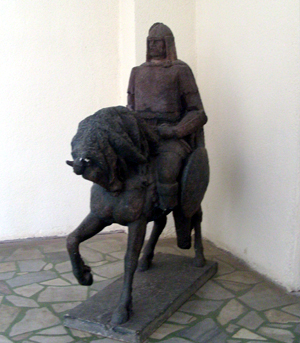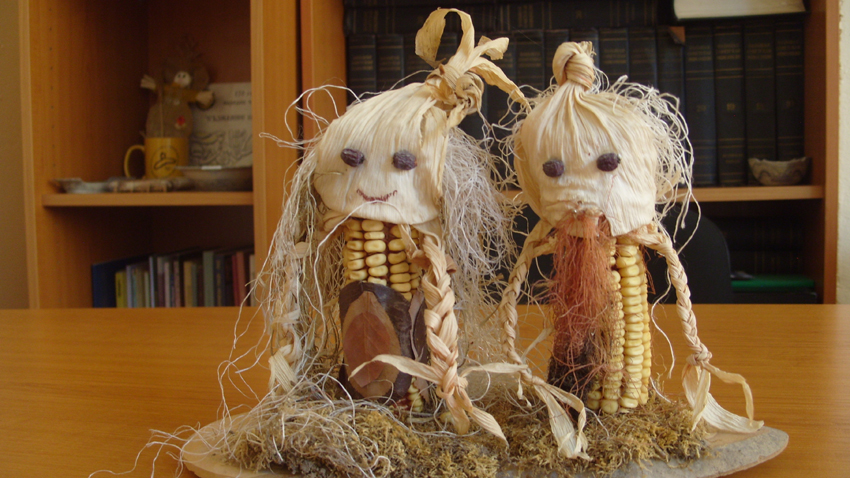Few people know that the history museum of Isperih participated with its artifacts in the Saga of the Thracian Kings: Archaeological Discoveries in Bulgaria exhibition in the period April 16 – 20 July 2015. However, why the museum of Isperih? Its Director Boryana Mateva answers the question:
 “The Isperih Museum was selected just like any other museum by a committee sent from the Louvre and accompanied by Bulgarian experts from the Archaeological Institute with the BAS and also from the St. Kliment Ohridski University. They selected objects that would be presented. Unfortunately they didn’t opt for our most representable vessels and exhibits, but chose a full collection of craftsmen’s tools from the Thracian town of Helis. Of course it is of a great significance to us, as our Sboryanovo reserve and the Thracian king’s tomb are the representative objects for this culture.”
“The Isperih Museum was selected just like any other museum by a committee sent from the Louvre and accompanied by Bulgarian experts from the Archaeological Institute with the BAS and also from the St. Kliment Ohridski University. They selected objects that would be presented. Unfortunately they didn’t opt for our most representable vessels and exhibits, but chose a full collection of craftsmen’s tools from the Thracian town of Helis. Of course it is of a great significance to us, as our Sboryanovo reserve and the Thracian king’s tomb are the representative objects for this culture.”
 The History Museum of Isperih has its permanent exposition, an ethnographic house, a windmill at the village of Belintsi and also the Thracian Tomb of Sveshtari. The museum has a very rich festive calendar. Exhibitions take place for the May festivals of art, with books presented and their authors. The program is related with the Day of Museums – May 18 and the European Night of Museums.
The History Museum of Isperih has its permanent exposition, an ethnographic house, a windmill at the village of Belintsi and also the Thracian Tomb of Sveshtari. The museum has a very rich festive calendar. Exhibitions take place for the May festivals of art, with books presented and their authors. The program is related with the Day of Museums – May 18 and the European Night of Museums.
“The second group of major events are the Days of the Isperih Municipality’s Cultural and Historical Heritage,” Boryana Mateva points out. “Those kicked off on September 28, going on to October 9. The first week is full of lectures and sittings, as usual. We have a workshop with maize leaves, named Beauty and an archaeological exhibition till the end of October. The Corn Fair takes place through the second week – this is its 11th edition, with culinary and ethnographic exhibitions included, along with old, maize-related games for the kids. The Maize Football tournament is popular among students.”
 Here is more from Boryana Mateva:
Here is more from Boryana Mateva:
“Usually in the beginning of the school year we have a program for working with students and schools, distributed later across all schools in the municipality. We propose lectures and a lecturer, covering a certain topic there. We create different objects, related to the main fests of the year – martenitsas, Easter eggs, survachki for New Year. Why do we work that hard with kids? Because they are the main visitors of the town museums. We try to respond to their curiosity. Adults volunteer for the events, in order to show interesting stuff and meet the children with traditions. It turns out that all this has a great success and is accepted with interest.”
English version: Zhivko Stanchev
On the day the Orthodox Church celebrates the Feast of St. Archangel Michael, the National Archaeological Reserve "Deultum-Debelt" will mark 1,160 years since the Christianization of the Bulgarian people. The event will be attended by Vice..
In his latest exhibition, Nikolay Buzov follows the principles of calligraphic art, offering a polyphony of abstract symbols and signs. His canvases emanate the sense of ease and freedom with which he creates his geometric structures. “The title..
On November 11 at 6:30 p.m., the Consulate General of Bulgaria in New York will host a special screening of a short film (18 min.) dedicated to the 120th anniversary of the prominent Bulgarian intellectual, composer and pianist Dimitar Nenov . During..

+359 2 9336 661
